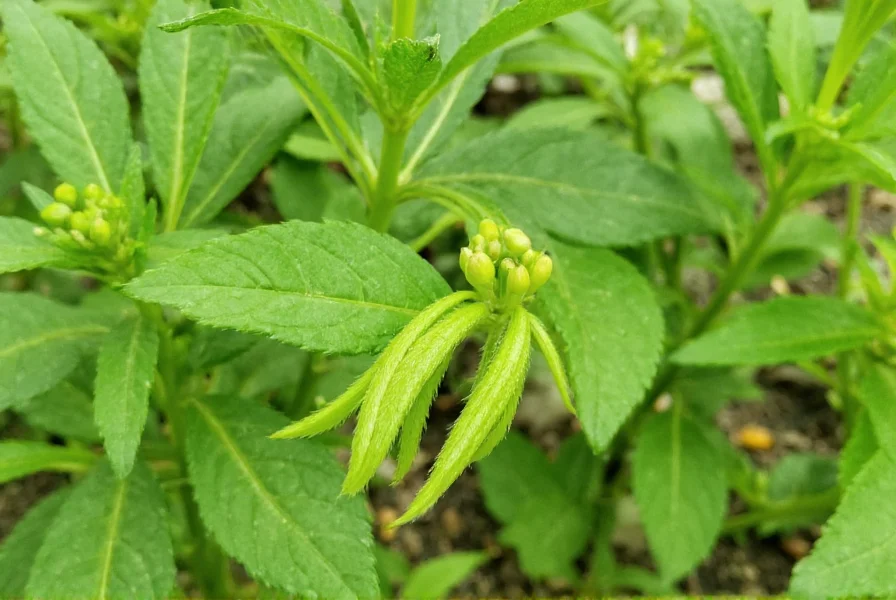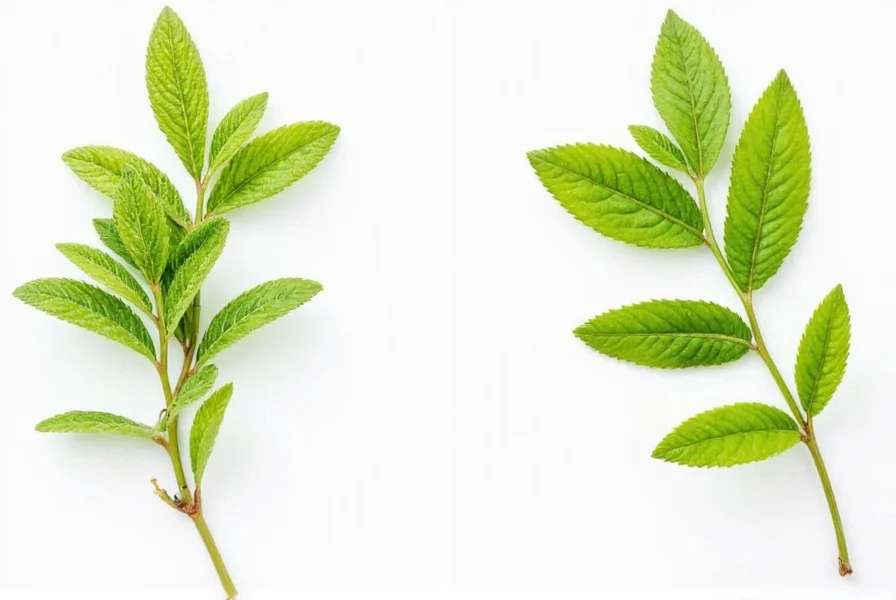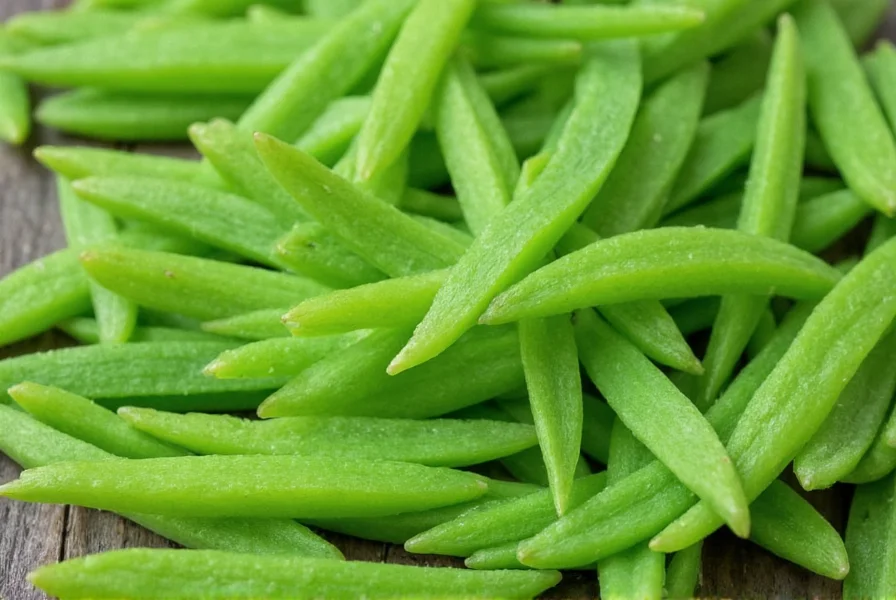"Anise green" is not a standard botanical or culinary term. Most searchers likely confuse it with fresh anise (Pimpinella anisum) plants, anise hyssop (Agastache foeniculum) which has green foliage, or possibly unripe star anise pods. True anise refers to the seeds of Pimpinella anisum, which are grayish-brown when mature, not green.
When gardeners and cooks search for "anise green," they're typically seeking information about fresh anise plants or confusing anise with similar-looking herbs. This common terminology mix-up creates confusion in both gardening and culinary circles. Understanding the botanical distinctions helps clarify what searchers actually need.
Botanical Clarification: What "Anise Green" Likely Refers To
The term "anise green" creates confusion because true anise (Pimpinella anisum) doesn't have a "green" variety in standard botanical classification. Let's examine what searchers probably mean:
| Plant | Scientific Name | Common Confusion with "Anise Green" |
|---|---|---|
| Anise | Pimpinella anisum | Refers to fresh plant before seed maturation |
| Anise Hyssop | Agastache foeniculum | Green foliage mistaken for "anise green" |
| Star Anise | Illicium verum | Unripe green pods confused with "anise green" |
| Anise Myrtle | Backhousia anisata | Australian plant with green leaves and anise flavor |
Identifying Fresh Anise Plants
When people search for "anise green," they're often looking at the fresh anise plant before seed harvest. The Pimpinella anisum plant features:
- Fern-like green foliage that emits an anise scent when crushed
- Delicate white flowers arranged in umbrella-shaped clusters
- Slender stems growing 12-24 inches tall
- Small, oval seeds that start green but turn gray-brown when mature
The "green" reference typically describes the immature seeds or fresh plant material. True anise flavor develops as seeds mature, with the strongest flavor in fully ripened, brownish seeds.

Anise Hyssop: The Common Confusion
Anise hyssop (Agastache foeniculum) causes significant confusion in "anise green" searches. This North American native:
- Features bright green, lance-shaped leaves
- Produces purple flower spikes that attract pollinators
- Has a distinct anise-mint fragrance when leaves are crushed
- Grows 2-3 feet tall in full sun conditions
Garden centers sometimes market anise hyssop as "anise-scented hyssop" or simply "anise plant," contributing to the terminology confusion. Unlike true anise, anise hyssop is a perennial that returns yearly in suitable climates.
Culinary Applications of Fresh Anise
Understanding the difference matters for cooking. Fresh anise plant components offer unique culinary properties:
- Fresh leaves: Milder flavor than seeds, excellent in salads and as garnish
- Immature green seeds: More delicate flavor than mature seeds, ideal for early-season harvesting
- Flowers: Edible with subtle anise flavor, perfect for decorative plating
- Roots: Historically used as a vegetable in some European cuisines
Chefs seeking "anise green" for recipes should know that fresh plant material provides a more subtle, herbal anise flavor compared to the intense sweetness of mature seeds. The green components work well in spring dishes where a lighter anise note is desired.
Growing Conditions for Anise Plants
If you're searching for "anise green" because you want to grow it, understanding proper cultivation is essential. Pimpinella anisum requires:
- Full sun exposure (6+ hours daily)
- Well-draining, slightly alkaline soil
- Consistent moisture without waterlogging
- Cooler temperatures during germination (70°F ideal)
- 120+ frost-free days to reach maturity
Anise Growth Stage Timeline
Research from the University of Massachusetts Extension confirms the precise development stages for optimal "anise green" harvest. The timeline below reflects field observations from agricultural trials:
| Days After Planting | Growth Phase | Critical Observations |
|---|---|---|
| 7-21 | Germination | Seedlings emerge; requires consistent soil moisture at 70°F |
| 30-60 | Vegetative Growth | Foliage reaches 12-18 inches; ideal for leaf harvesting |
| 60-90 | Immature Seed Formation | Green seed pods develop ("anise green" phase); peak flavor window |
| 100-120 | Seed Maturation | Seeds transition from green to gray-brown; flavor intensifies |
Source: University of Massachusetts Extension. (2023). Anise Production Guide. Retrieved from https://ag.umass.edu/vegetable/fact-sheets/anise
The plant remains green throughout its growing season until seeds mature in late summer. Harvesting leaves and immature seeds during this green phase gives what many call "anise green." In cooler climates, anise grows as an annual; in warmer zones, it may behave as a short-lived perennial.

Common Misidentifications
Several plants get mistaken for "anise green," leading to confusion:
- Fennel: Has similar feathery foliage but yellow flowers and stronger licorice flavor
- Dill: Resembles young anise but has different flower structure and flavor profile
- Tarragon: Narrower leaves with more pronounced anise flavor than fresh anise
- Star anise: Tree-produced pods that are green when immature, often confused with herbaceous anise
Proper identification prevents culinary mistakes. Crush a leaf to test—true anise has a distinctive sweet, licorice-like aroma without the sharpness of fennel or dill.
Contextual Applications and Limitations
Research from Oregon State University Extension identifies critical boundaries where each "anise green" candidate succeeds or fails. These context-specific limitations prevent costly gardening and culinary errors:
- True Anise (Pimpinella anisum):
- Ideal for: Traditional Mediterranean baking and liqueur production where pure anise flavor is essential
- Limitations: Unsuitable for short-season climates (requires 120+ frost-free days); fresh leaves lose flavor when cooked beyond 3 minutes
- Anise Hyssop (Agastache foeniculum):
- Ideal for: Perennial gardens in USDA zones 4-9 and fresh applications like fruit salads where mint undertones enhance flavor
- Limitations: Cannot substitute in baking (mint compounds degrade at 350°F+); ineffective for seed-based recipes due to low oil concentration
- Star Anise (Illicium verum):
- Ideal for: Whole-spice applications in slow-cooked dishes (e.g., Vietnamese pho) using unripe green pods
- Limitations: Tree cultivation impossible in temperate home gardens; unsafe for infants due to neuroactive compounds
Source: Oregon State University Extension Service. (2023). Herb and Spice Compatibility Guide. Retrieved from https://extension.oregonstate.edu/gardening/vegetables/herbs-spices/herb-spice-guide
Practical Guidance for Gardeners and Cooks
For those searching "anise green" with practical goals in mind:
- Harvest fresh anise leaves in morning for strongest flavor
- Use green immature seeds within 24 hours for best results
- Substitute fresh tarragon if true anise isn't available
- Grow anise hyssop as a hardier perennial alternative
- Dry green seeds slowly at low temperatures to preserve flavor
Understanding these distinctions transforms confusing searches into successful gardening and cooking experiences. The key is recognizing that "anise green" refers to the fresh state of the plant, not a separate variety.
Frequently Asked Questions
Is anise green a different plant than regular anise?
No, "anise green" isn't a separate plant variety. It typically refers to the fresh, immature state of the Pimpinella anisum plant before seeds fully mature and turn gray-brown. The green color describes either the fresh foliage or unripe seed pods.
Can I use anise hyssop as a substitute for anise green?
Yes, anise hyssop makes a reasonable substitute with some differences. It has a milder anise flavor with mint undertones and remains green throughout its growing season. Use 1.5 times the amount of anise hyssop to match the flavor intensity of fresh anise plant material.
When is the best time to harvest anise green?
Harvest fresh anise leaves throughout the growing season, preferably in the morning after dew dries. For immature green seeds, harvest when pods first form but before they turn brown, typically 60-90 days after planting. The optimal window is narrow—about 7-10 days before full maturity.
Why do some sources mention green anise seeds?
Anise seeds start green when immature and gradually turn gray-brown as they ripen. Some specialty markets sell these immature green seeds, which have a more delicate flavor than mature seeds. However, they're less common because the full anise flavor develops as seeds mature and dry.
How do I store fresh anise green?
Treat fresh anise like other delicate herbs. Wrap leaves in slightly damp paper towels and store in airtight container in the refrigerator for 3-5 days. For longer storage, chop finely and freeze in ice cube trays with water or oil. Immature green seeds can be dried slowly at room temperature away from direct light.











 浙公网安备
33010002000092号
浙公网安备
33010002000092号 浙B2-20120091-4
浙B2-20120091-4